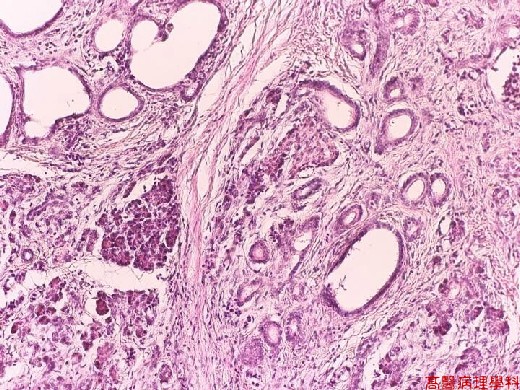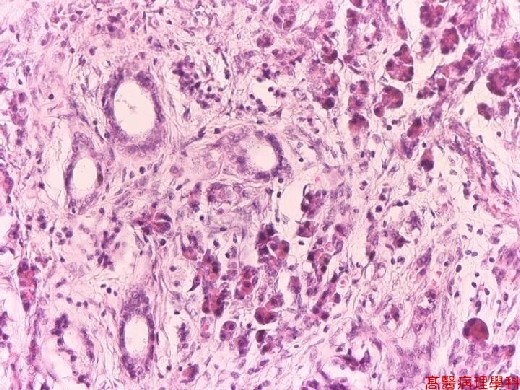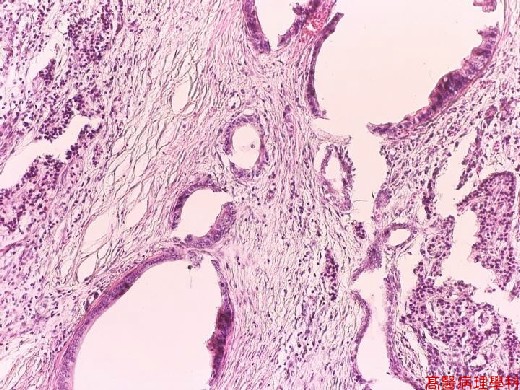《Slide 123.》Adenocarcinoma, Pancreas
A. Brief Descriptions:
-
Ductal adenocarcinoma of the exocrine pancreas comprises about 85% of pancreatic malignancy.
-
Most arise in the head of the pancreas (60%).
-
Ductal epithelial origin.
-
Extrapancreatic extension is common.
B. Gross Findings:
-
Poorly delineated ,firm with a yellowish gray cut surface, extrapancreatic extension is common.
C. Micro Findings:
-
Destruction of pancreatic lobules with neoplastic glands.
-
Well-formed neoplastic glands with larger lumen and lined by one or more layers of epithelium which show cellular atypia.
-
Irregularity in the shape and distribution of these neoplastic glands surrounded with desmoplastic stroma (extensive desmoplastic reaction).
D. Others:
略.
E. Reference:
-
Robbins Pathologic Basis of Disease, 6th ed. P.910-911.
|
|
【 Fig. 123-1 (LP)】The pancreatic parenchyma is infiltrated by irregular glandular structure.
|
|
【 Fig. 123-2 (LP)】Irregular cancerous glands infiltrating in interlobular stroma and in pancreatic lobules.
|
|
【 Fig. 123-3 (LP)】The normal architecture of pancreas is destructed by the infiltration of cancer glands. Note remainder pancreatic acini in middle left.
|
|
【 Fig. 123-4 (HP)】The cancerous glands extend into pancreatic lobules.
|
|
【 Fig. 123-5 (HP)】Stromal desmoplasia is prominent.
ssssssss




